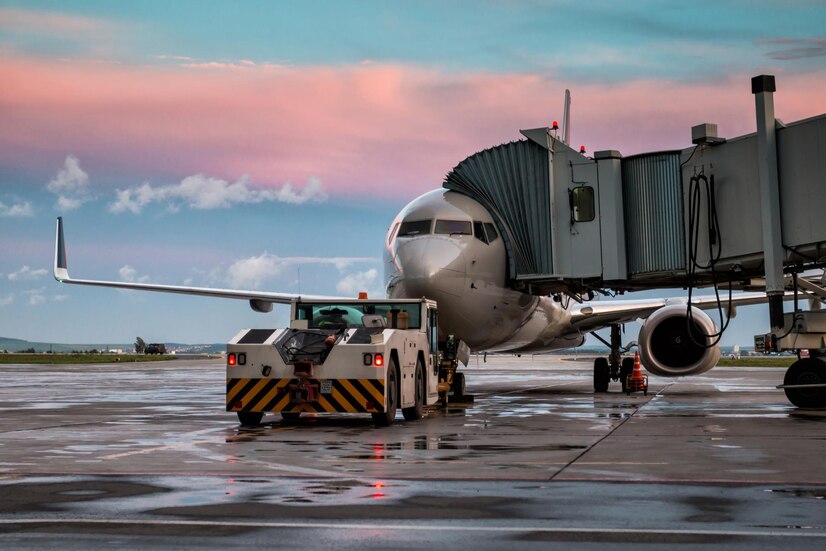Business Pressures In The Aviation Industry
4 Mins Read
Published on: 31 March 2023
Last Updated on: 07 September 2024

toc impalement
No business is immune to forces outside of its control. The recent years in the aviation industry have shown that it is vulnerable to three main factors. The shift in economic cycles, political instability, and changes in consumer behavior. They created a lot of tension for airlines, airports, and aircraft manufacturers.
Anyone interested in this field must constantly follow aviation news to track these trends. Without the right information, you might miss profitable investment opportunities or be the last to hear about downward trends. Here we’ll cover three main factors influencing the aviation industry in the past year.
Economic Challenges

The economic turmoil caused by the Covid-19 pandemic is still impacting the aviation industry. While the net losses are smaller in 2022 compared to 2021, the market still hasn’t fully recovered. One of the main challenges is the ongoing supply chain disruptions that aren’t likely to recover to pre-pandemic efficiency.
Material suppliers have gone through major setbacks in production and delivery. It resulted in some layoffs, and now that the demand is back, they cannot hire enough skilled labor. Due to safety requirements, aircraft manufacturers cannot lower their quality, which results in fewer orders being completed on time.
In turn, the Airlines aren’t getting the needed aircraft while the demand for flights has almost returned to pre-pandemic levels. Rising prices of jet fuel worsen this situation even more. Although, airlines are somewhat compensating their losses with cargo deliveries that have even surpassed the 2019 level.
Many airports have been closed during the pandemic, and all have seen fewer planes landing. As with manufacturing, airports had to cut their workforce and now are rebuilding from scratch. However, airports were helped by government funding as many regions depend on the work opportunities they provide.
Political Factors
Just as one crisis ended, another one began. The Russian war in Ukraine has impacted the aviation industry in at least three major ways. It closed a large part of airspace for commercial travel, changed the availability of aircraft parts, and raised jet fuel prices.
The last factor is the most impactful for airlines. Just as the demand for commercial flights has returned back to near pre-pandemic levels, the soaring jet fuel prices pushed it back. The expected recovery of most airlines in 2021 has been slower for this reason.
Due to the sanctions imposed on Russia, many aircraft manufacturers had to cut ties with this country. It isn’t a large market for aircraft sales but was a significant exporter of materials, such as titanium. Airplane manufacturers (such as Airbus) had to change their supply chains dramatically in 2021.
Russian airports were important hubs for connected flights prior to the invasion. Now that these flights must be re-routed, some airports, such as the Dubay international airport, have seen a growth in incoming planes. Some countries, such as Turkey, are still accepting flights from Russia in a bid to protect their tourism sector and airports.
Read Also: 3 Powerful Benefits to Making Your Customers’ Experience Multi-lingual
Consumer Behaviour
Many reports, such as the one by the U.S. Department of Transportation, inform that May of 2021 was when the number of commercial flights almost returned to pre-pandemic levels. Despite this trend, it seems that traveling by air will never be the same as before.
In pre-pandemic times, business trips were a necessity for some professions. Nowadays, they are more of a “leisure,” treated as a reward to good employees. Most companies now agree that a video call can be as effective as an in-person meeting, just without the traveling expenses.
Traveling for leisure has also become more inconvenient. As health concerns and vaccine certificates became a thing. Of course, covid restrictions are going away, but the shift in mentality has already happened. Travelers have developed a habit of evaluating the health risks and inconveniences before traveling.
Ecological factors have also started to play an important role in customer decisions. Flights, especially short ones, are not the most environmentally-friendly way to reach your destination. And since the ease of internet communication has reduced the urgency, most travelers are reluctant to choose airplanes as their mode of transportation.
These three factors alone are enough to conclude that consumer demand for flights isn’t returning to pre-pandemic levels any time soon. Under these business pressures, airlines must do their best to market flights as something easily accessible to balance the changed consumer behavior.
Still, some economy airlines, such as Ryanair, have even announced that the era of cheap flights is over for good. The expensive jet fuel and challenges in aircraft manufacturing do not allow for reversing consumer behavior trends quickly enough.
It is possible that this effect may trickle down through the whole aviation industry. With airlines lowering the number of flights, manufacturers will have to cut production, and airports will get emptier. But such pessimistic predictions are rarely true, and it’s better to trust your own judgment by following the newest trends in the aviation industry.
Conclusion
The airline industry is facing multiple challenges from a couple of different fronts. The economic disruption of the Covid-19 pandemic has weakened the market, with lost revenue, fluctuating demand, and disrupted supply chains. The Russian war in Ukraine has prolonged this crisis which does not allow for customer behavior to return back to normal.
Read Also:


















Comments Are Closed For This Article